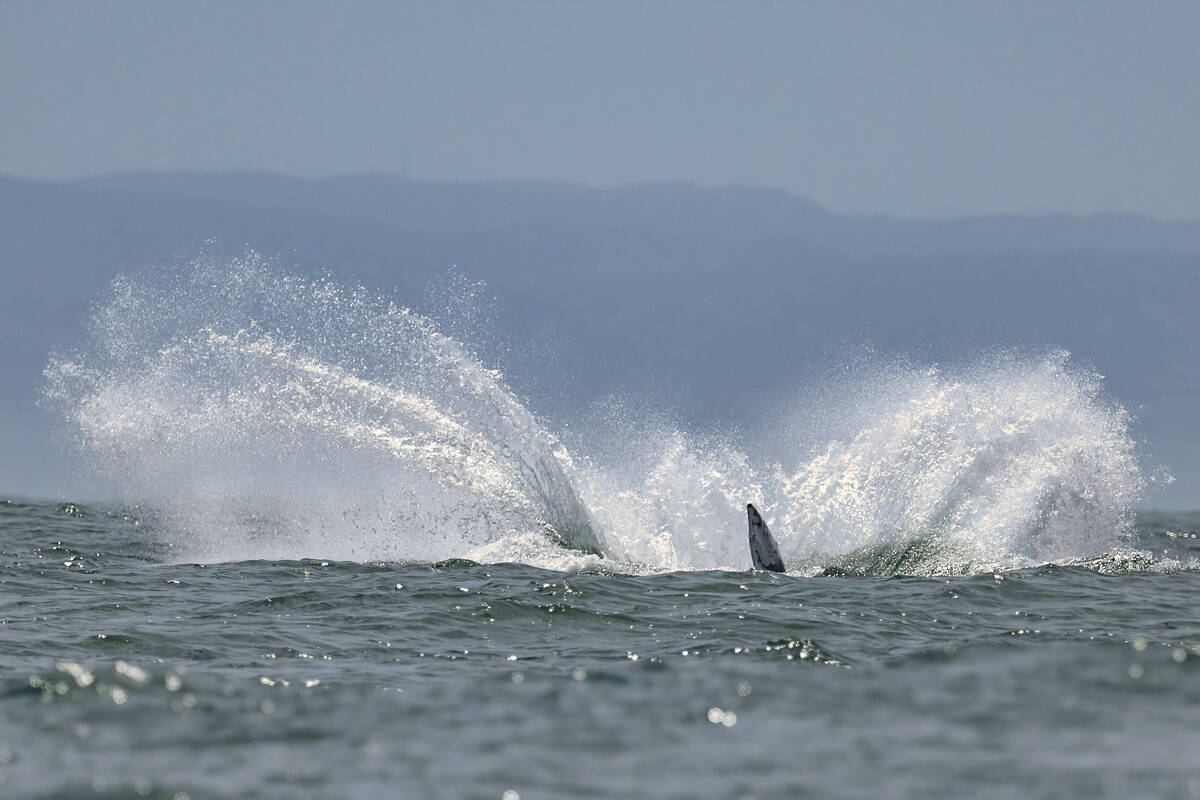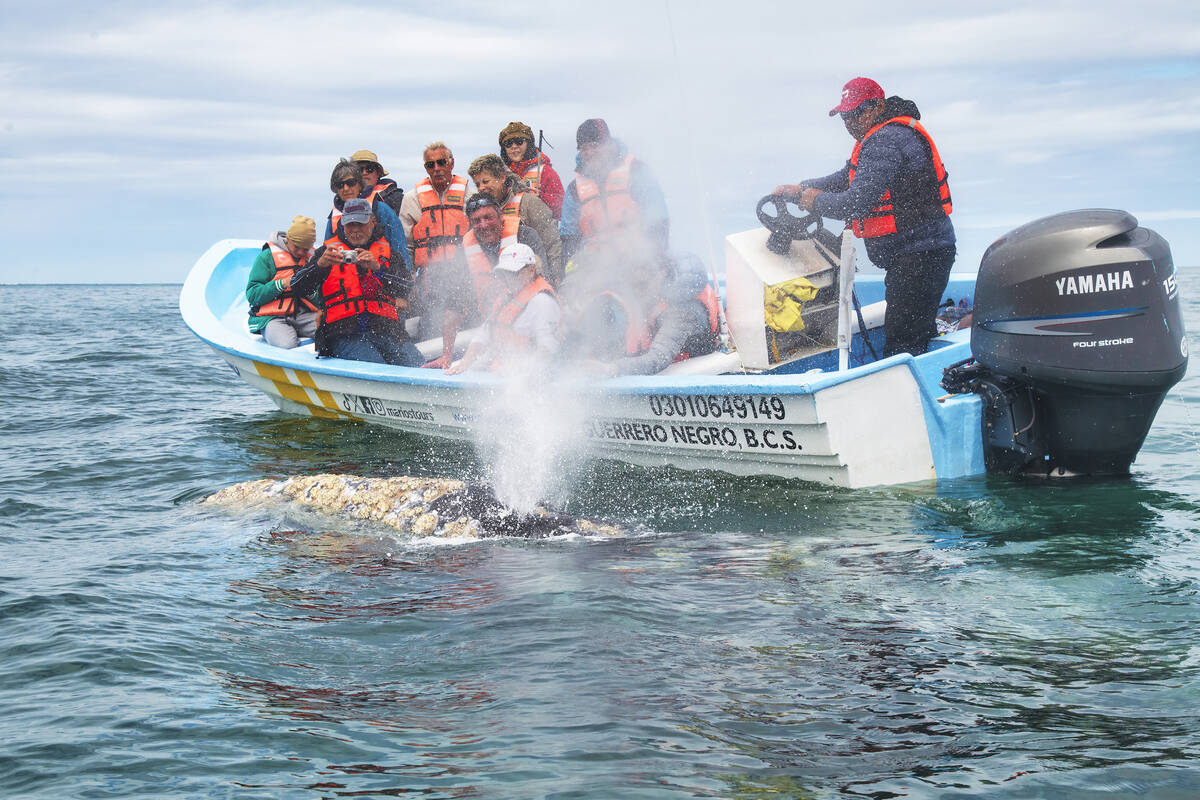Mexico’s Baja California Peninsula has a reputation for the best whale watching in the world.
We have watched whales in other places, some experiences being better than others. However, this was dramatically different with massive creatures so close that we could reach out and touch them.
Gray whales of the eastern Pacific Ocean have the longest migration of any mammal, travelling up to 30,000 kilometres annually.
Read Also

Vintage power on display at Saskatchewan tractor pull
At the Ag in Motion farm show held earlier this year near Langham, Sask., a vintage tractor pull event drew pretty significant crowds of show goers, who were mostly farmers.
They summer in the nutrient-rich waters of the Bering and Chukchi seas between Alaska and Russia. In fall, they head south to the warm protected lagoons of Mexico’s Baja California Peninsula where they breed, give birth and raise their calves.
Whales arrive around late December or early January, with the prime time for whale watching usually in late winter and early spring when many mothers have calves.
The whales favour three lagoons along the Pacific coast, all of which offer whale watching excursions. The most northerly, and the one we visited, is Ojo de Liebre Lagoon near the town of Guerrero Negro, about halfway along the peninsula. It was declared a refuge in 1972.

San Ignacio Lagoon is a bit farther south, while Magdalena Bay is the most southerly and closest to the popular tourist town of Loreto.
Before we headed out with folks from Mario’s Tours, they provided an orientation about the whales and the trip, and there was time to see the exhibits in the Whale Museum in the company’s office building. An official census taken the day before our mid-March visit indicated 414 whales in the lagoon.
A 10-minute boat ride took us to where the whales hang out. All around we saw water spouts from whales’ blowholes. Our skipper pulled into the midst of the activity, stopped and then we sat there. The big difference from most whale watching tours here is that we don’t go looking for whales. They come looking for us.
A few minutes later, one huge monster was beside our boat and swimming underneath it. It kept crossing from side to side as if it was playing with us, perhaps amused at seeing passengers frantically scramble for a better view and excitedly pointing cameras in different directions.
Tours use pangas, flat-bottomed fishing boats holding about 10 passengers. They are much smaller than the whales, which can reach 14 metres long and weigh up to 40 tonnes.
If one of these leviathans wanted to wreak havoc with the boat, it would be a simple matter. Yet these gentle giants come within inches of the boat without disturbing it.

“There’s another one,” someone shouted as a whale came from behind.
It raised its head out of the water for a better look and then came so close that it was easy to reach out and pat it. Its skin felt somewhat like a vinyl chair covering.
The rule in wildlife viewing is to look but not touch. This is a notable exception because the gray whales in Baja California exhibit behaviour found nowhere else.
During our orientation we were told that it is OK to touch a whale if it initiates the behaviour, but not to touch its eye, mouth, fin, blowhole or tail.
Sometimes a whale beside the boat would spout water, covering us with salty spray. While this is a normal part of breathing, we couldn’t help but wonder if the shower at close quarters was part of their playfulness.
Mothers brought their calves close to our boat. Newborns are impressive in their own right, stretching more than four metres and weighing nearly a tonne.
The most dramatic behaviour was breaching, in which whales launch themselves into the air and fall back with an impressive splash. Seeing such a massive creature become airborne is unforgettable.
Why whales here seek human interaction remains a mystery.
Scientists think that gray whales approach boats to connect with people. If passengers in one boat don’t reach out to touch them, it’s not unusual for them to move on to another boat.
One reason could be that they are relaxed and feel safe. The lagoons do not have killer whales, which prey on calves during their migration.
It is believed that the whales see people as neither prey nor threat; that they are simply curious about these odd creatures that get so excited to see them.
Local fishermen familiar with whales have a more straightforward explanation. The whales know that they were born in these protected Mexican waters and they’re simply happy to be back home.
While gray whales are a highlight, it is possible to see up to nine whale species in the state of Baja California Sur on the southern half of the peninsula.
The most convenient place to fly into is Loreto, a small historic city in the centre of the state surrounded by other natural attractions such as breathtaking coastlines and beaches, rugged mountains and colourful deserts.
We travelled there on a four-hour non-stop flight from Calgary.
For more details see Loreto Tourism at loretobcstourism.com.
Arlene and Robin Karpan are well-travelled writers based in Saskatoon. Contact: travel@producer.com.


















